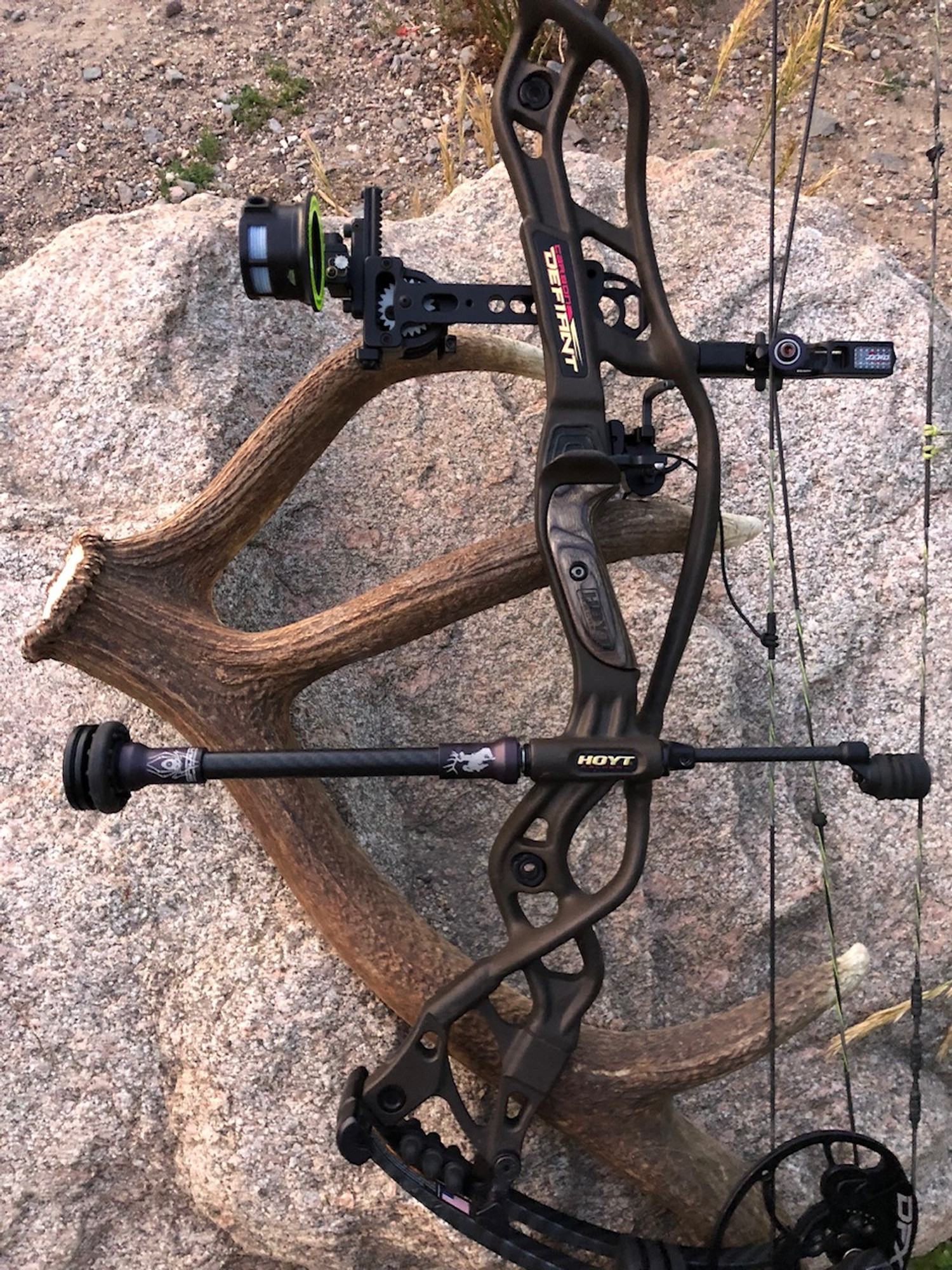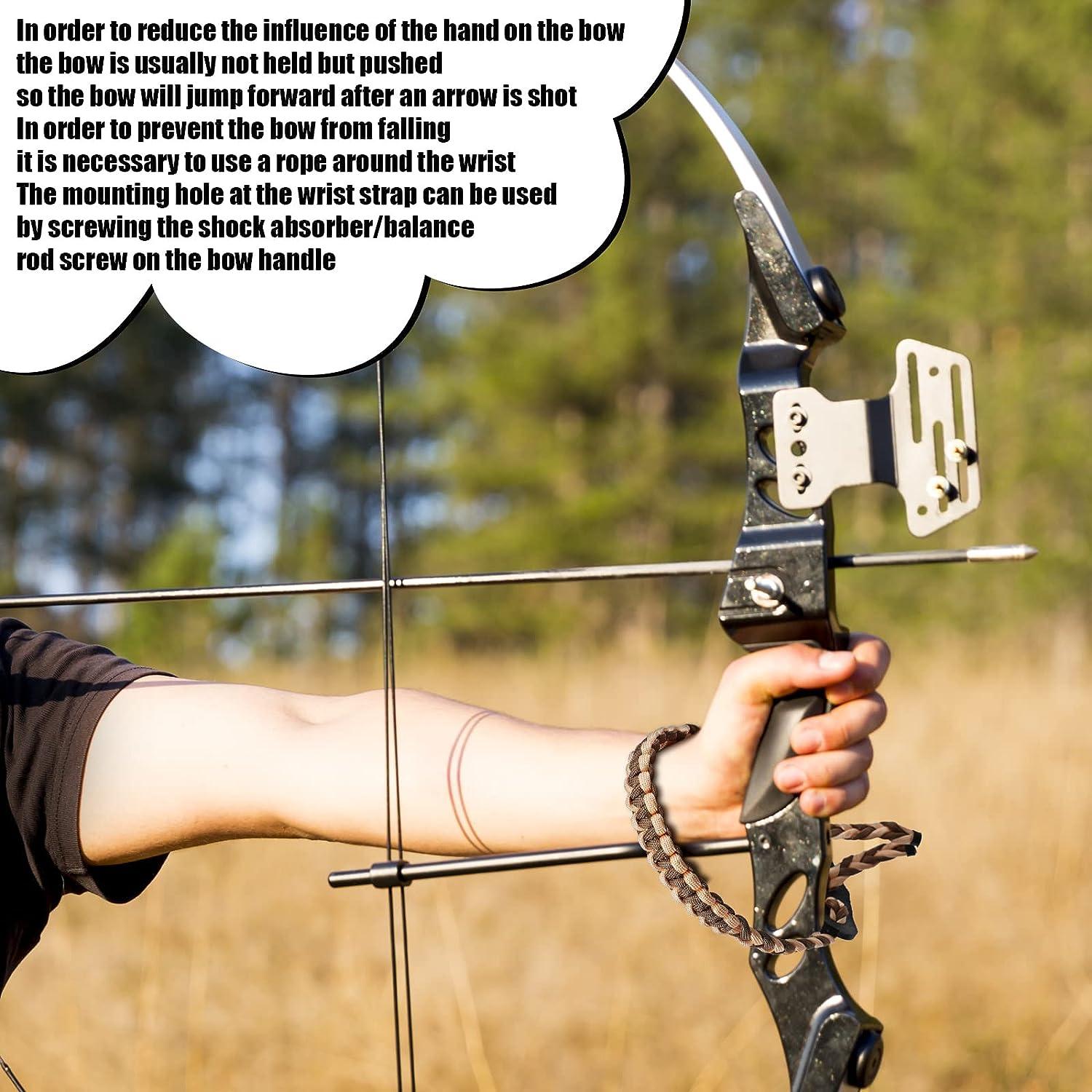Remain Steady: Checking Out the Advantages of Compound Bow Stabilizers
Remain Steady: Checking Out the Advantages of Compound Bow Stabilizers
Blog Article
Optimizing Your Archery Efficiency With the Right Substance Bow Stabilizer: an Extensive Introduction
In the world of consistency, precision and archery are paramount to attaining ideal efficiency. One often-overlooked yet crucial component in enhancing accuracy is the substance bow stabilizer. This humble gadget plays a considerable function in steadying your objective, decreasing bow torque, and absorbing resonances. Nonetheless, the performance of a stabilizer pivots on different elements, including placement, weight, and layout. By comprehending the subtleties of picking and optimizing a substance bow stabilizer, archers can tweak their tools to raise their shooting experience to brand-new levels of effectiveness and control.
Relevance of Bow Stabilizers in Archery

Additionally, bow stabilizers aid in balancing the weight circulation of the bow, which can improve the archer's security while intending and shooting. By including weight to the front of the bow, stabilizers can reduce the amount of torque experienced upon launch, resulting in a smoother and a lot more regulated shot - compound bow stabilizer. This weight distribution likewise aids in holding the bow stable for a longer duration, allowing the archer to intend a lot more properly
Types of Compound Bow Stabilizers
When taking into consideration the numerous kinds of substance bow stabilizers offered, it is necessary to comprehend their unique features and functions to establish the most ideal choice for making best use of archery efficiency. The most usual types of compound bow stabilizers consist of sidebar stabilizers, front stabilizers, and back stabilizers. Back stabilizers, additionally called rear stabilizers, are mounted to the back of the bow and aid in counteracting the weight of other devices, resulting in enhanced security and constant aiming.
Elements to Consider When Picking
In examining substance bow stabilizers, recognizing the distinctive features and functions of each type is important for making an educated choice on the most ideal alternative to boost archery efficiency. When picking a stabilizer, one have to consider the weight of the stabilizer itself. By carefully evaluating these factors, archers can select a substance bow stabilizer that straightens with their shooting design and optimizes their general performance on the archery variety.
Installment and Modification Tips
For ideal efficiency and accuracy in archery, mastering the installation and change of your bow stabilizer is necessary. Proper installment begins with affixing the stabilizer to the bow's riser, ensuring it is strongly protected.
When adjusting the stabilizer, begin with small step-by-step modifications instead than extreme changes. This enables you to analyze the effect of each alteration precisely. Take notice of exactly how the bow responds to changes in stabilizer settings and make changes appropriately. Keep in mind that the objective is to locate a configuration that reduces hand torque, minimizes resonance, and enhances accuracy. Routinely inspect the stabilizer's rigidity and overall condition to guarantee it proceeds to function efficiently. By mastering the setup and change process, you can maximize your archery efficiency and elevate your shooting experience.
Upkeep and Treatment Standards

It is likewise vital to store your bow with the stabilizer in a secure and safe area when not in use. Following these upkeep and care standards will aid you obtain the most out of your bow stabilizer and enhance your total archery performance.
Verdict
To conclude, choosing the appropriate compound bow stabilizer is crucial for optimizing archery performance. Recognizing the significance, kinds, elements to take into consideration, setup and change suggestions, along with maintenance and treatment guidelines can substantially affect one's precision and consistency in capturing. By picking a stabilizer that fits specific needs and choices, archers their website can improve their general efficiency and attain better outcomes on the variety or in competition.
Bow stabilizers play an important role in improving an archer's precision and consistency by minimizing resonances and stabilizing the bow during the launch of an arrowhead - compound bow stabilizer.Additionally, bow stabilizers assist in stabilizing the weight distribution of the bow, which can enhance the archer's security while shooting and intending. The most usual types of compound bow stabilizers include sidebar stabilizers, front stabilizers, and back stabilizers. Back stabilizers, likewise called back stabilizers, are mounted to the back of the bow and assist in reversing the weight of various other devices, resulting in boosted stability and consistent intending. When choosing a stabilizer, one must think about the weight of the stabilizer itself
Report this page